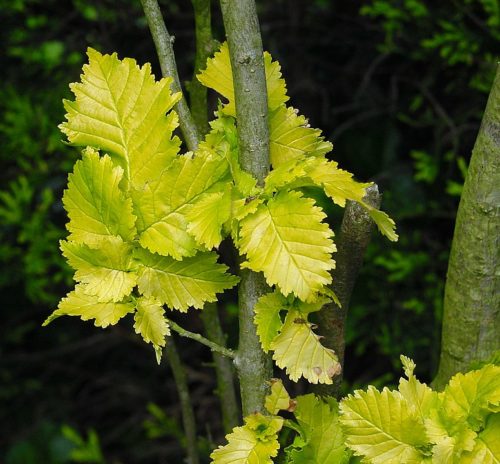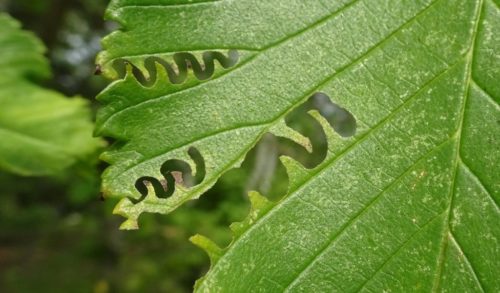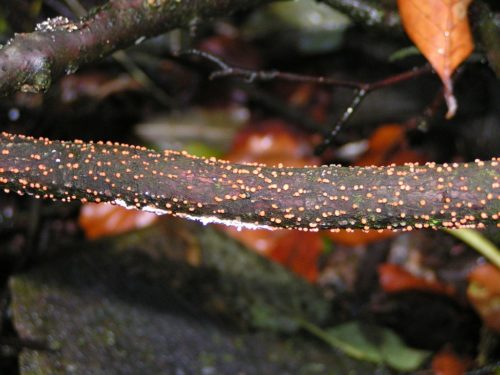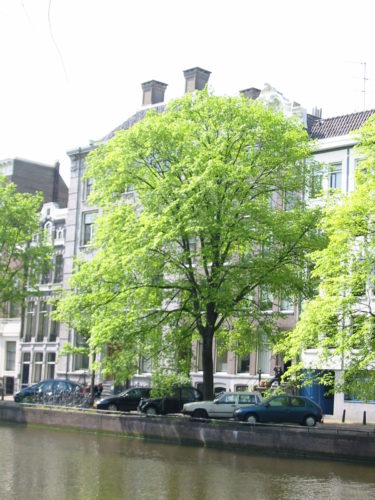The Dutch elm is a hybrid of the Wych elm and the field elm. The tree can grow more than 30 meters high.
You are viewing the mobile-adapted version of the page.
The one for tablets, laptop and desktop also provides general information, such as origin, toxicity and cultivation.
Dutch elm – (Ulmus ×hollandica), a hybrid of the Wych elm (Ulmus glabra) and the field elm (Ulmus minor). The tree can grow more than 30 meters high. The bark is grooved. The leaf has two unequal halves. The Dutch elm is susceptible to the Dutch elm
A well-known cultivar of the Dutch elm is the Ulmus Hollandica Wredei Golden Elm (Ulmus × hollandica ‘Wredei’).

Bugs

Zigzag pattern in leaf: Elm zigzag sawfly (Aproceros leucopoda).

Adult cockchafer (Melolontha melolontha) eats leaves and flowers: cockchafer. Cockchafers can become a nuisance and eat entire trees bare.
Fungi & diseases
Branches wilt, die, then the whole tree dies: Dutch elm disease.

Small, orange-red raised spots appear on affected branches, which can be either dead or living branches: Coral spot (Nectria cinnabarina).
Other
Woodpeckers are often found on elms, sometimes causing damage by making nest cavities in often young elms.

